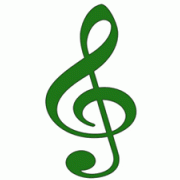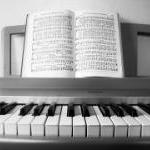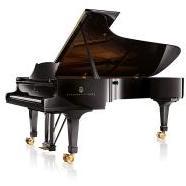-
Posts
171 -
Joined
-
Last visited
-
Days Won
10
JorgeDavid last won the day on February 17
JorgeDavid had the most liked content!
About JorgeDavid

- Birthday 10/23/1990
Profile Information
-
Biography
I am a spaniard living in South Korea who recently started to learn music theory and composition. In the past I played flamenco guitar and I recently started learning piano.
-
Gender
Male
-
Location
South Korea
-
Occupation
Electronic Engineer
-
Interests
Music, films, literature
-
Favorite Composers
Bach, Beethoven, Paco de Lucia, Dvorak...
-
My Compositional Styles
Still a newbie so I guess no clear style yet.
-
Notation Software/Sequencers
Sibelius with Noteperformer
-
Instruments Played
Flamenco/Classical Guitar and Piano
Recent Profile Visitors
JorgeDavid's Achievements
-

Key Change
JorgeDavid replied to BlackkBeethoven's topic in Incomplete Works; Writer's Block and Suggestions
Another way would be to move to Abmin for a moment and then, from there, to its parallel major of Cbmaj (enharmonically equivalent to Bmaj). I think it could be quite smooth specially if you go through the V64 --> V progression (B/F# --> F#). For example: I guess this couldn't be considered a lush progression, though. As @Monarcheon suggested, for a lush progression it might be better to start with some line (maybe melody, or a strong bassline that you know points towards B major, or both) and start filling in the remaining voices in any way that sounds good. -

Vocalise Romance in C Minor for Voice and Piano
JorgeDavid replied to JorgeDavid's topic in Choral, Vocal
Thanks for listening and commenting @Kvothe, and I am glad you found it to be a nice piece!! Yeah, the initial plan was trying to emulate Bartok/Stravinsky style but, since I did not really have fluency with that, after following the simple steps outlined in the post, I ended up just composing it in my own style (by that I mean composing it in any way that sounded good to me without any effort to emulate any particular style). I need to study Bartok style more in depth yet as I found it quite complex😣 I have never listened to Rachmoninov vocalises but I will give them a listen!! Thank you! -

Vocalise Romance in C Minor for Voice and Piano
JorgeDavid replied to JorgeDavid's topic in Choral, Vocal
Thanks for your nice words and for listening, @MJFOBOE. Nino Rota is one of my favorite composers (specially his "circus" music) so I am really happy that you said that! 😄Glad you enjoyed! Thank you! -
Hello everyone, I composed this inspired by a composition practice exercise for writing some neotonal music (Bartok, Stravinsky, etc): Step 1. Write a diatonic melody in a mode missing one note. Step 2. Use a different mode or scale for the harmony. My melody is in C Ionian without F, and the harmony is C ascending melodic minor (C major with Eb, though I ended up using E here and there too). I later added a B section with the melody focusing on the unused note F. The form is ABA'BA. A' is exactly same melody and accompaniment type but with different harmonies, specially in the first chord, that is Major instead of minor. Some of my concerns are: Does the piece and structure work overall? There is lots of repetition but I feel that having the harmony of A' changed helps a lot on the overall flow and making the A and B repetition feel anew. Also, I changed melody on last measure of each A which also seems to help. Does the harmony work in general? (There might be some weird spots, specially in section B). Does it work well as a vocal piece or another instrument would be better (specially since there are no lyrics)? Technically it is in C Minor (it starts and ends in it) but since it uses mostly natural A and natural B throughout, and natural E on the melody, I used the Cmaj key signature. Is that okay or I should change it to using three flats like in natural C minor? I am not sure how to notate the piano sections that consist of ascending chordal accompaniment (with the pedal, although it is not marked). Is there any obvious mistake in the notation?) Thanks for listening and any feedback is welcome! PD: I found out that the first 4 notes and main motive of the piece (and the mood, because of the vocal singer) is similar to Jerry Goldsmith's theme to 'The Illustrated Man'. I never heard it before so it was a pure coincidence. I think the harmonization of those 4 notes is different, though.
-
Hi @Kvothe, I am not expert in counterpoint, so take my comments with a grain of salt. Most of your exercise would be technically correct, as it is mostly thirds and sixths. I see you have an interval of a fourth in m.14. This interval, in classical counterpoint, would be considered a mistake (even though in other types of counterpoint it would be acceptable). So, strictly speaking, your counterpoint is not wrong. However, most times counterpoint is used as an exercise by setting up some rules and learning how to compose while sticking to them. These rules can be really varied, but some of the common classical rules are: 1. Using mostly third and sixths (up to three times in a row of the same interval at most) 2. Trying to make the melody move mostly by step, with occasional jumps (making the melody as melodic as possible). 3. Contrasting contour between melody and bass to some degree, where at times when one goes up, the other down, and vice versa. 4. Avoiding parallel fifths and octaves, having fifths only in contrary motion, etc. For example, in your exercises the melody is jumping around too often, which, in classical counterpoint, would be considered something to avoid. So, while your exercises are not wrong, I think you would benefit more by setting up some rules and following them, since using sixths and thirds without consideration of the melodic contour would be easy and, while technically correct, I am not sure it would help you as an exercise. Hope it helps and thank you for sharing your exercises!
-
JorgeDavid started following Oboe Concerto
-

Waltz No.1 in A Minor for Piano
JorgeDavid replied to JorgeDavid's topic in Piano Music, Solo Keyboard
Long time no see, @PeterthePapercomPoser. Exactly around 6 months! Hope everything is going great! I was really busy and ran into another musical hiatus where I could not practice or study at all, but I finally restarted it last week. I was planning to focus on learning, instead of composing, as I want to improve my technique and also go through some partimento (rule of the octave, schematas, etc) and jazz practicing. But, after 3 days of piano, I happened to compose again 😅 Now that I am practicing again I will try to browse more often through the forum, I have seen you have kept on with your microtonal pieces! Thanks for your feedback! I also like that from the piece. I always had a tendency to use cross relations without even realizing, particularly in counterpoint, as I enjoyed the sound but in this piece, that G/G# one surprised me (I realized once I composed it), since it is on the same beat and on a strong beat. I think my ear grew used to major seventh dissonances from when I learned a little bit of jazz 😆 Thank you so much for commenting! -

Waltz No.1 in A Minor for Piano
JorgeDavid replied to JorgeDavid's topic in Piano Music, Solo Keyboard
Thank you so much for letting me know about the notation error, @Kvothe! Because of the grouping the first bar (and similar ones) might be understood as 6/8. I did not know it but now I totally understand it. Thanks for noticing! I will fix it for the final version. Also, regarding the tempo, I guess I could get rid of tempo marking since the expression marks such as "agitato" might be enough to convey the mood of the piece. Sadly, I do not know any pianist, so I cannot get real-life feedback, but I will try to find out about how tempo markings are normally used! For this piece, do you have any particular suggestion about which tempo marking would fit best? Thanks for commenting! -

Waltz No.1 in A Minor for Piano
JorgeDavid replied to JorgeDavid's topic in Piano Music, Solo Keyboard
Thank you so much for the feedback and I am glad you liked it, @TristanTheTristan, I really appreciate it! Regarding the tempo, I am curious about what is the convention with Waltzes. As far as I know, I am using the metronome at around 180bpm if I consider each quartet note as the beat (so three beats per measure). Or is it maybe common in Waltzes to consider the bpm as the first beat of each measure or to consider other particular measure (such as feel of the music)? Thanks for all the feedback of the parts you liked the most! And yes, there is a few notes that are different because I am constantly changing a few notes here and there and I will record it when it is completed. But 99% of the piece is going to stay as it is. Regarding the bar 93, I understand it is a weird bar. It is just a repetition of the same material already played (first in Amaj, now in Dmaj), so the bass note should be A, to have a diatonic F#min chord with the third on the bass moving diatonically. However, in that particular context I like much more the A# in the bass, I am not sure why. It does create a F#7 chord with the natural A on top. The fact that the bass moves from A# to G is strange, but I do like it. But I can imagine most performers would actually change the A# into an A thinking it is a mistake 😅 I am aware of that bar and might consider changing the bass note to the A. But for now I like it better this way. Thanks for noticing it! I also enjoy that part and, both the Maestoso together with the set of bars that you pointed out are my favorite part of the piece! Glad you enjoyed it too! Yes, the ending is quite overwhelming. I am not good at writing Codas but I am going to extend it for the final version, even if it is only a couple of extra bars. The ending now sounds too rushed and probably a few more bars to let the ending breath will improve it. 8.5/10 is really good!! Thank you so much for your encouragement and the nice words!! Thanks for listening and commenting! -
Hello everyone! I composed a waltz for piano during the weekend. I wanted it to be "easy" to play so I composed it with an accompaniment that does not need jumps or the use of the pedal. It is still hard to play for me, so, while I practice, I leave it here with my initial live performance until I can play it better (it would sound awful with midi). My main concerns is always with the form, as I am not sure how do transition best between sections, when to repeat things or let them go, etc. So any feedback about that is more than welcome. The piece is in the form ABCBA. A is the main theme in A minor, which is repeated at the end. It is a frantic and agitated theme (and needs to be played rubato). B is a modulatory section and needs to be played without rubato and with the melody "singing". It is based on a long chromatic descending bass line so it is highly chromatic and there might be many compositional mistakes in this section. While it is the easiest section, I have troubles played it beautifully. You can listen to the only time I played it as well as I wanted in 2:01 from the audio. C is a simple lyrical theme in A major. The audio is really bad, it is based on different recordings so the quality of the sound changes a little. When I practice everything and have a finalized score and audio rendition I will update it! Hope you like it and any feedback is more than welcome! Thank you!
-

Adagio Lamentoso in G Minor for Piano
JorgeDavid replied to JorgeDavid's topic in Piano Music, Solo Keyboard
I am really glad you enjoyed the piece @Finish the Sextet! Thank you so much for listening and commenting! 🙂 -

Adagio Lamentoso in G Minor for Piano
JorgeDavid replied to JorgeDavid's topic in Piano Music, Solo Keyboard
Thank you so much for the nice words, @GospelPiano12! I am really glad you like the piece! I am also happy that you seem to agree with me over the things you enjoyed about the piece. There are some parts I am not so happy with but, in general, I was also really happy with the melody and phrasing and with that "modern but not too modern" sound (which, even though I know what you mean, I am also not sure what it consists in, but I also though the same 😅). Yes, I also would like to try orchestrate it in the future. I have two pieces pending to be orchestrated (this one and the Bagatelle No.2) but these days I am slowly learning orchestration while practicing the piano so I will probably do it a little bit in the future. They are slow pieces and I find I have much more trouble orchestrating slow pieces :S. Thank you so much for listening and leaving a comment! -

Adagio Lamentoso in G Minor for Piano
JorgeDavid replied to JorgeDavid's topic in Piano Music, Solo Keyboard
I just listened to it and it was really beautiful! I knew Halo but, to be honest, I had never played it so I did not know the music. So I listened to the original theme first and then to your piece. I really enjoyed the piece. I think it is also great that you post everything in Musescore because the music can be played while seeing the score scrolling with all the instruments, so I might use your pieces to learn how to notate and use some instruments (Especially the percussion. In this piece the simple but effective use of the snare drum and bass drum is already something that helps me a lot, since I always have trouble imagining how to use and notate those instruments). I still need to gain some confidence for attempting an arrangement like that but I understand what you mean. It might be interesting to learn a a little bit more abut orchestration and then trying to apply the knowledge to reimagine some of my favorite pieces. Thanks for the advices! -

Adagio Lamentoso in G Minor for Piano
JorgeDavid replied to JorgeDavid's topic in Piano Music, Solo Keyboard
Yes, mixing the study of an instrument with composition is not as easy is I though mostly because, at least in my case, if I do not focus full time to the learning of the instrument I feel like I do not progress at all. It is like if I learn only 30 minutes a day I cannot improve my piano skills and need to spend at least 1~2 hours on it everyday for seeing results. I also though about arranging other pieces for practicing, and it is a really good idea but, to be honest, I feel like arranging my own pieces give me that motivational boost that I need for taking real effort on studying orchestration. But I guess I should start considering arranging existing pieces even if it is just for practicing different orchestral techniques in a more mechanical way. I listened to the 'long artic midnight suite' and I really liked it! Specially the first movement. Even though the time signatures were unusual the whole movement felt so smooth! And the orchestration was great too. I did not expect the Spitfire instruments to blend so nicely with the MuseSound ones! Really nice piece! If I have to nitpick the couple of piano parts that started a couple of sections were a little bit to "new age" for my taste, but that is just a matter of taste, and it is not like they were not enjoyable. Thanks for sharing the piece! I agree. I actually bought in the past a few Berlin instruments for Musescore. And at first I thought "these sound amazing!" but as soon as I started composing with dynamics and expression markings they became quite unusable. Even the piano, where the change from mp to mf is like the change from p to ff in a normal piano. So, in the end, I ended up using only the MusesSounds. As you say, some brass are bad. I only like the Saxophones, that is why I used Saxophones for that Soli of the Jazz piece that I am still working on. I think it is not a bad idea mixing some instruments from Labs with the MusesSound! I think LABS work with subscription plan, right? I might consider trying it out in the future. Thanks for the explanation, @UncleRed99! -

Adagio Lamentoso in G Minor for Piano
JorgeDavid replied to JorgeDavid's topic in Piano Music, Solo Keyboard
Thank you so much for the encouragement, @UncleRed99, I really appreciate it! In my case I always wanted to compose orchestral music and that is still one of the goals in the long term. My problem is always time. Mostly because of my piano skills. Practicing piano takes 70% of my time, which is only a couple hours a day, and I still do not learn as fast as I wanted to. But I invest on it because I feel it will help me compose much faster in the future. I did try orchestrating before. I have several orchestral books but I have no time to study them in an orderly fashion so basically I decided I wanted to orchestrate some of my pieces and read enough of those books for applying it to my pieces. 6 months ago I did my favorite one but it is actually more of a piano concerto than a symphonic orchestra. You can see it here from when I posted it in the forum! My problem is also that I do not compose that often. And I need pieces for trying to orchestrate them but I ran out of pieces hahaha. I pretty much posted here 90% of what I composed so I do not have many stuff and I rarely throw any ideas. Normally if I start something I finish composing something with it and post it. So for being able to orchestrate again I will need to compose some new things 😥. Now I actually have a piece I want to orchestrate, the "Bagatelle No.2" but I really like that piece so I put it aside to do it in the future when I have better skills. I heard nice things about the Spitfire LABS VST before! Do you use them in a DAW or it can be integrated with musescore and you use both sounds (Spitfire and MuseSounds) at the same time? Also, what audio plugins you use in musescore? What I do is using the reverb for all instruments as a group (instead of one reverb for each instrument) and also the ProEQ plugin, basically just setting each instrument to its family (for example, I set all strings instruments to "strings" option in the ProEQ). I feel the ProEQ plugin really make things sound so much more real. Thank you for the advice about labeling the piano grandstaff! I heard that is the best way to practice at first. Just composing at the piano and thinking about the sounds you want to writing it down roughly by main instruments and family, without going straight to notating everything in the orchestral score. Actually, recently I found a transcription of the whole "Lord of the Rings" OST that a fan made, exactly like that, with the piano and the outlines of the instruments and families and I am using it for listening to the score and seeing if I slowly learn something. I will need to try to compose for orchestra in that way myself too!





.thumb.png.8b5b433a341551e913a34392660bc95b.png)






